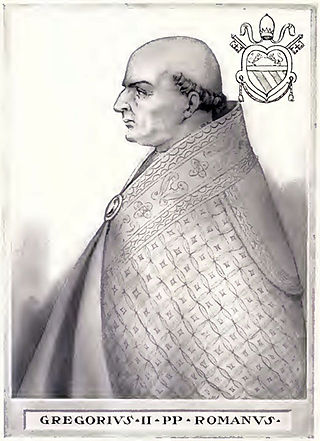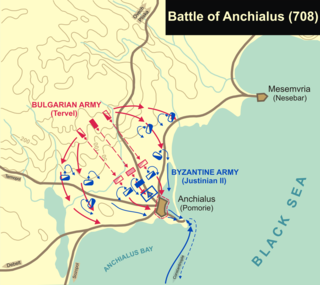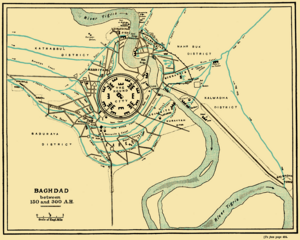The 760s decade ran from January 1, 760, to December 31, 769.

Year 811 (DCCCXI) was a common year starting on Wednesday of the Julian calendar, the 811th year of the Common Era (CE) and Anno Domini (AD) designations, the 811th year of the 1st millennium, the 11th year of the 9th century, and the 2nd year of the 810s decade.

Year 802 (DCCCII) was a common year starting on Saturday of the Julian calendar, the 802nd year of the Common Era (CE) and Anno Domini (AD) designations, the 802nd year of the 1st millennium, the 2nd year of the 9th century, and the 3rd year of the 800s decade.

Year 812 (DCCCXII) was a leap year starting on Thursday of the Julian calendar, the 812th year of the Common Era (CE) and Anno Domini (AD) designations, the 812th year of the 1st millennium, the 12th year of the 9th century, and the 3rd year of the 810s decade.

Year 638 (DCXXXVIII) was a common year starting on Thursday of the Julian calendar. The denomination 638 for this year has been used since the early medieval period, when the Anno Domini calendar era became the prevalent method in Europe for naming years.

Year 756 (DCCLVI) was a leap year starting on Thursday of the Julian calendar, the 756th year of the Common Era (CE) and Anno Domini (AD) designations, the 756th year of the 1st millennium, the 56th year of the 8th century, and the 7th year of the 750s decade. The denomination 756 for this year has been used since the early medieval period, when the Anno Domini calendar era became the prevalent method in Europe for naming years.
Year 763 (DCCLXIII) was a common year starting on Saturday of the Julian calendar. The denomination 763 for this year has been used since the early medieval period, when the Anno Domini calendar era became the prevalent method in Europe for naming years.
Year 767 (DCCLXVII) was a common year starting on Thursday of the Julian calendar, the 767th year of the Common Era (CE) and Anno Domini (AD) designations, the 767th year of the 1st millennium, the 67th year of the 8th century, and the 8th year of the 760s decade. The denomination 767 for this year has been used since the early medieval period, when the Anno Domini calendar era became the prevalent method in Europe for naming years.

Year 775 (DCCLXXV) was a common year starting on Sunday of the Julian calendar. The denomination 775 for this year has been used since the early medieval period, when the Anno Domini calendar era became the prevalent method in Europe for naming years.

Year 782 (DCCLXXXII) was a common year starting on Tuesday of the Julian calendar, the 782nd year of the Common Era (CE) and Anno Domini (AD) designations, the 782nd year of the 1st millennium, the 82nd year of the 8th century, and the 3rd year of the 780s decade. The denomination 782 for this year has been used since the early medieval period, when the Anno Domini calendar era became the prevalent method in Europe for naming years.

Year 788 (DCCLXXXVIII) was a leap year starting on Tuesday of the Julian calendar, the 788th year of the Common Era (CE) and Anno Domini (AD) designations, the 788th year of the 1st millennium, the 88th year of the 8th century, and the 9th year of the 780s decade. The denomination 788 for this year has been used since the early medieval period, when the Anno Domini calendar era became the prevalent method in Europe for naming years.

813 (DCCCXIII) was a common year starting on Saturday of the Julian calendar, the 813th year of the Common Era (CE) and Anno Domini (AD) designations, the 813th year of the 1st millennium, the 13th year of the 9th century, and the 4th year of the 810s decade. As of the start of 813, the Gregorian calendar was 4 days ahead of the Julian calendar, which was the dominant calendar of the time.

Year 837 (DCCCXXXVII) was a common year starting on Monday of the Julian calendar.

Year 701 (DCCI) was a common year starting on Saturday of the Julian calendar, the 701st year of the Common Era (CE) and Anno Domini (AD) designations, the 701st year of the 1st millennium, the 1st year of the 8th century, and the 2nd year of the 700s decade. The denomination 701 for this year has been used since the early medieval period, when the Anno Domini calendar era became the prevalent method in Europe for naming years.

Year 680 (DCLXXX) was a leap year starting on Sunday of the Julian calendar. The denomination 680 for this year has been used since the early medieval period, when the Anno Domini calendar era became the prevalent method in Europe for naming years.

Year 715 (DCCXV) was a common year starting on Tuesday of the Julian calendar. The denomination 715 for this year has been used since the early medieval period, when the Anno Domini calendar era became the prevalent method in Europe for naming years.

Year 712 (DCCXII) was a leap year starting on Friday of the Julian calendar, the 712th year of the Common Era (CE) and Anno Domini (AD) designations, the 712th year of the 1st millennium, the 12th year of the 8th century, and the 3rd year of the 710s decade. The denomination 712 for this year has been used since the early medieval period, when the Anno Domini calendar era became the prevalent method in Europe for naming years.

Year 708 (DCCVIII) was a leap year starting on Sunday of the Julian calendar, the 708th year of the Common Era (CE) and Anno Domini (AD) designations, the 708th year of the 1st millennium, the 8th year of the 8th century, and the 9th year of the 700s decade. The denomination 708 for this year has been used since the early medieval period, when the Anno Domini calendar era became the prevalent method in Europe for naming years.

The siege of Kamacha by the Abbasid Caliphate took place in autumn 766, and involved the siege of the strategically important Byzantine fortress of Kamacha on the eastern bank of the Euphrates River, as well as a large-scale raid across eastern Cappadocia by a part of the Abbasid invasion army. Both enterprises failed, with the siege dragging on into winter before being abandoned and the raiding force being surrounded and heavily defeated by the Byzantines. The campaign was one of the first large-scale Abbasid operations against Byzantium, and is one of the few campaigns of the Arab–Byzantine wars for which detailed information survives, although it is barely mentioned in Arabic or in Byzantine sources.
















